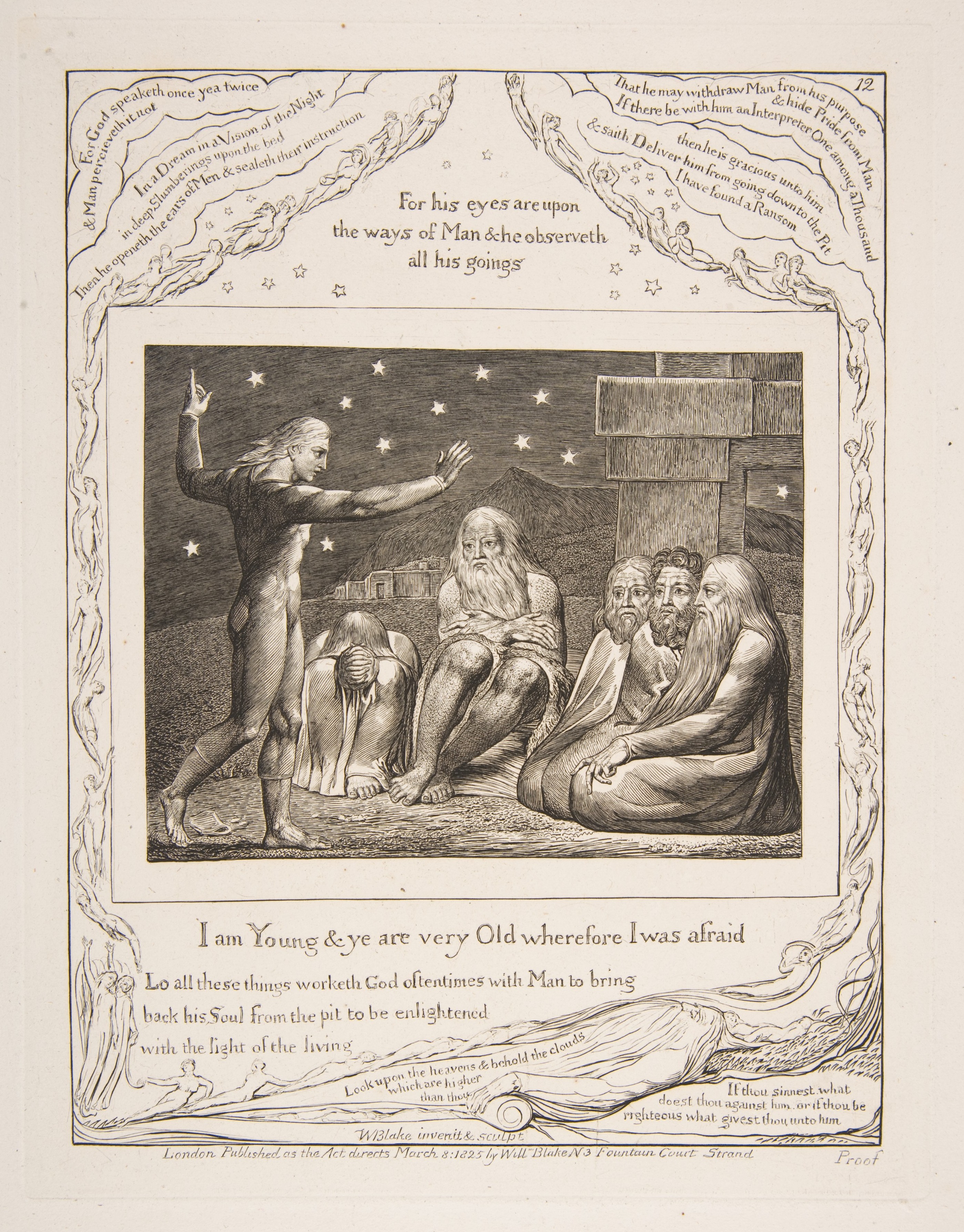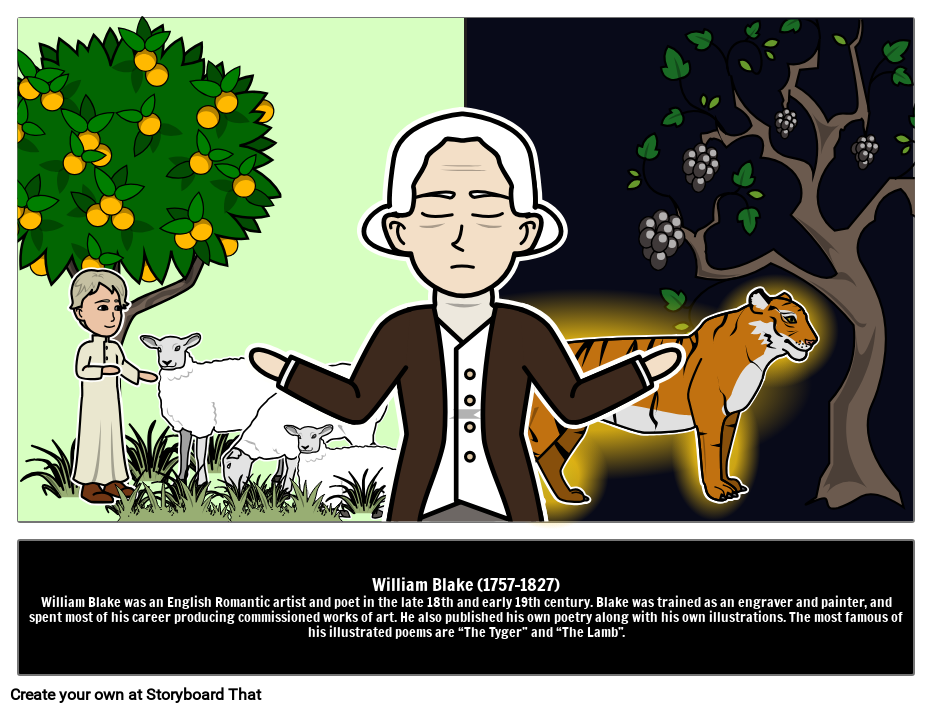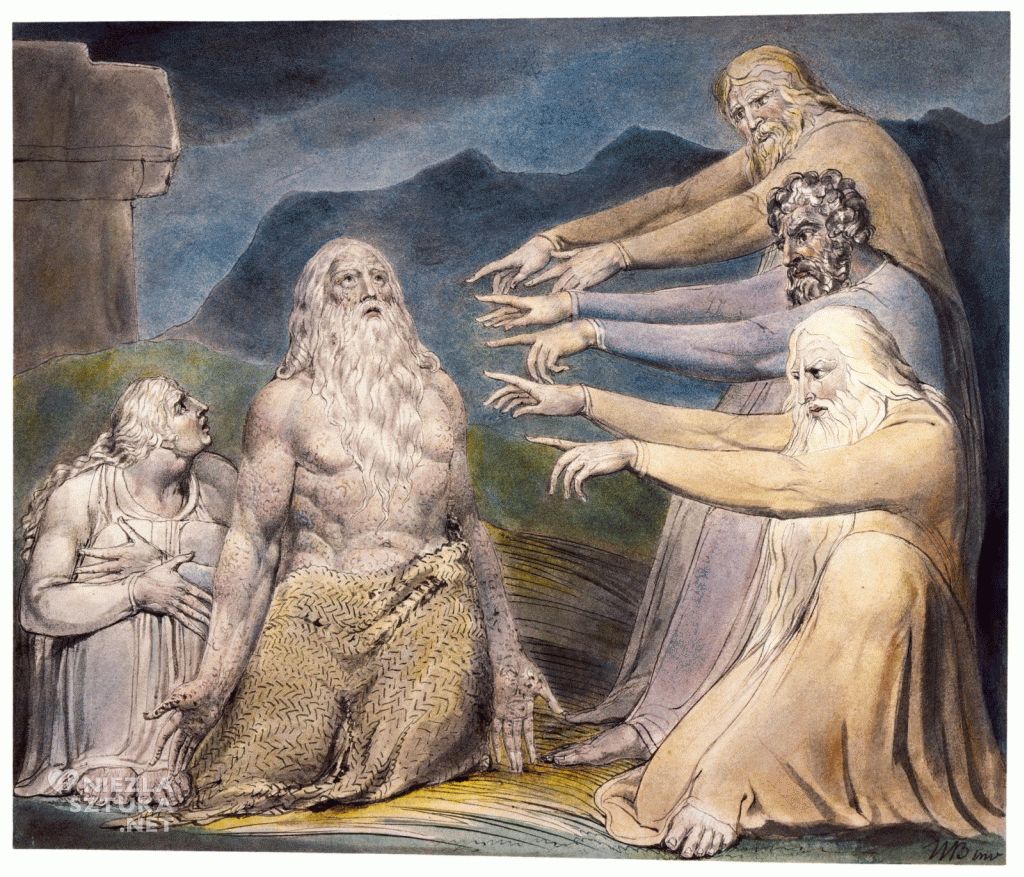galatéerato novembre 2018
Visions of eternity. Visions were commonplaces to Blake, and his life and works were intensely spiritual. His friend the journalist Henry Crabb Robinson wrote that when Blake was four years old he saw God's head appear in a window. While still a child he also saw the Prophet Ezekiel under a tree in the fields and had a vision, according to his first biographer, Alexander Gilchrist (1828-61.

William Blake, British poet, painter and engraver, after the portrait
But this study develops a reliable and comprehensive framework for understanding these peculiarities. According to the author, Blake's poetry and drawings should compel us to reconsider the history of the 1790s. Tracing the many links among economics, politics, and religion in his work, the author shows how Blake questioned and even subverted.

Pin by Mariola Kazama on Tapety, szablony, Tumblr... Fractal art, Art
William Blake, Bóg stwarzający wszechświat Ojca Wszechmogącego, Stworzyciela nieba i ziemi W centralnym punkcie obrazu znajduje się postać Boga — starca o atletycznej budowie ciała. Stwórca, trzymając w ręku cyrkiel — narzędzie stworzenia, pochyla się nad swoim dziełem pełen skupienia i zamyślenia.

PPT Stworzenie świata i człowieka PowerPoint Presentation, free
William Blake, „Urizen stwarzający świat", 1794, British Museum, Londyn, Wielka Brytania, pinimg.com, CC BY 3.0.. 1. Bóg prowadzi Ewę do Adama, trzyma pierwszych rodziców za ręce, przygotowuje się do połączenia dłoni - scena przypomina zawarcie małżeństwa. 2. Adam podnosi się z liści dębu, a Bóg prowadzi Ewę z.

William Blake Great Writers Inspire
obraz Williama Blake'a / Z Wikipedii, wolnej encyklopedii. Urizen stwarzający świat lub Stworzenie świata ( ang. The Ancient of Days) - akwaforta kolorowana akwarelą, wykonana przez Williama Blake'a w 1824 roku, o wymiarach 23,3 × 16,8 cm. Obecnie w zbiorach Muzeum Brytyjskiego w Londynie. Artysta oddał nastrój chwili stworzenia.

William Blake The Wrath of Elihu, from Illustrations of the Book of
William Blake, overlooked in his time, remains an enigmatic figure to contemporary readers despite his near canonical status. Out of a wounding sense of alienation and dividedness he created a profoundly original symbolic language, in which words and images unite in a unique interpretation of self and society. He was a counterculture prophet whose art still challenges us to think afresh about.

File1795WilliamBlakeNaomientreatingRuthOrpah.jpg Wikimedia Commons
Urizen stwarzający świat lub Stworzenie świata ( ang. The Ancient of Days) - akwaforta kolorowana akwarelą, wykonana przez Williama Blake'a w 1824 roku, o wymiarach 23,3 × 16,8 cm. Obecnie w zbiorach Muzeum Brytyjskiego w Londynie. Artysta oddał nastrój chwili stworzenia poprzez rozwiane włosy Stwórcy.
Los and Enitharmon knew that the Satan is Urizen from Milton a Poem
A remarkable printmaker, painter, and poet, William Blake (1757-1827) developed a wildly unconventional world view, representing universal forces of creation and destruction — physical, psychological, historical — through his own cast of characters. By combining his poetry and images on the page through radical graphic techniques, Blake created some of the most striking and enduring.

William Blake Storyboard by
Obraz Williama Blake'a pt. „Bóg stwarzający Wszechświat" został namalowany akwarelami w 1824 roku. W rozumieniu Blake'a akt stworzenia świata był aktem negatywnym. Na obrazie namalowana jest postać mężczyzny pochylonego do przodu. Można wnioskować, że jest to Bóg w chwili stwarzania świata.

Puisi Bahasa Inggris Terkenal Karya William Blake Dan Terjemahannya
William Blake, overlooked in his time, remains an enigmatic figure to contemporary readers despite his near canonical status. Out of a wounding sense of alienation and dividedness he created a profoundly original symbolic language, in which words and images unite in a unique interpretation of self and society. He was a counterculture prophet whose art still challenges us to think afresh about.

Leonid Tishkov The Moon of William Blake
The Romantic painter and poet William Blake created some of the most iconic images in British cultural history - from a strange sidelong portrait of Isaac Newton, bent over naked at the bottom.

Filozof w trzech słowach (9) Leszek Kołakowski Bóg Artykuł Culture.pl
Poet, painter, engraver, and visionary William Blake worked to bring about a change both in the social order and in the minds of men. Though in his lifetime his work was largely neglected or dismissed, he is now considered one of the leading lights of English poetry, and his work has only grown in popularity. In his Life of William Blake (1863) Alexander Gilchrist warned his readers that Blake.

Artysta, wizjoner i mistyk. William Blake » Niezła sztuka
William Blake (28 November 1757 - 12 August 1827) was an English poet, painter, and printmaker. Largely unrecognised during his life, Blake is now considered a seminal figure in the history of the poetry and visual art of the Romantic Age.What he called his "prophetic works" were said by 20th-century critic Northrop Frye to form "what is in proportion to its merits the least read body of.

Tema med variationer Hade Bellman läst Blake?
William Blake, "Bóg stwarzający Wszechświat", 1794, fot. British Museum/wikipedia.org. Filozof w trzech słowach (9) Leszek Kołakowski: Bóg. #filozofia. Autor: Piotr Nowak. Udostępnij: Facebook Twitter. Na początku wyjaśnijmy sobie rzecz podstawową. Nie ma żadnej wątpliwości, że Leszek Kołakowski był największym filozofem.

Can Life Have Meaning Without God? Psychology Today
Ucz się z Quizlet i zapamiętaj fiszki zawierające takie pojęcia, jak William Blake, Bóg stwarzający wszechświat, William Blake, Newton, William Turner, statek niewolniczy itp.

Portrait of William Blake (17571827). Museum PRIVATE COLLECTION Stock
Obraz pt. „Stworzenie Świata" powstał w 1824. z ręki wspaniałego artysty, działającego w epoce romantyzmu - Williama Blake'a (1757-1827). Dzieło wykonano akwarelami. Uwagę widza przyciąga znajdująca się w centralnej części obrazu postać, przypuszczalnie Bóg ujęty w momencie tworzenia świata.